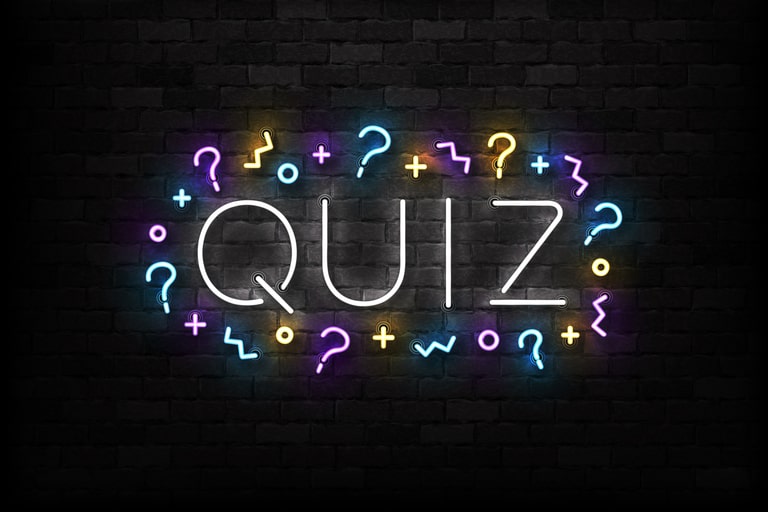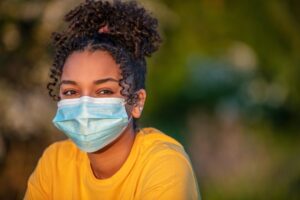By Glenn Geher, State University of New York at New Paltz
The coronavirus spreads from person to person. Thus, in an important way, the current pandemic is largely an issue of human social behavior. I created the below test of basic information about the virus to, hopefully, inform behavioral decisions. Now more than ever, we need to remember that information is power.
The COVID Quiz
Below are 10 questions that pertain to basic facts surrounding COVID-19. An answer key with citations and explanations is provided at the end.
1. The 19 in COVID-19 corresponds to:
A. The fact that this is 19th strain of the virus to have been documented.
B. The fact that this virus was first discovered in 2019.
C. The fact that 19 nations, across the world, have been afflicted with COVID.
D. The fact that the average age of those who contract the virus is 19.
2. The death rate from COVID-19, based on current scientific estimates from around the world, are closest to which of the following?
A. 2%
B. .01%
C. 25%
D. 75%
3. Which of the following is a foundational and highly common symptom of COVID-19 (the illness caused by the coronavirus)?
A. Heightened cognitive abilities
B. Incessant vomiting
C. Fever
D. Heightened social-emotional abilities
4. Which of the following is most true regarding someone having proven positive for the antibodies for coronavirus?
A. Presence of the antibodies definitely doesn’t mean anything.
B. Most research on the presence of antibodies has shown that antibodies, at a minimum, provide some immunity from the virus for at least several months.
C. Presence of the antibodies for coronavirus actually corresponds to an increase in the likelihood of contracting the virus multiple times.
D. The antibodies for coronavirus only have been shown to exist in people with pre-existing medical conditions.
5. Which of the following is most true regarding the effects of wearing masks to reduce the spread of the virus?
A. No scientific research, in fact, has demonstrated any beneficial effects of mask-wearing.
B. Masks are only useful for those with pre-existing medical conditions.
C. Masks generally improve athletic performance.
D. Policies requiring masks to be worn in public reduces the rate of transmission of the virus.
6. According to best estimates of bio-technical leaders, the effective development and large-scale dissemination of a vaccination for coronavirus will be available approximately when?
A. September 2020
B. 2021
C. 2025
D. Never, as the virus is too complex for scientists to effectively understand how to stop it.
7. In terms of the demographics that pertain to infection with the virus, which of the following statements is true?
A. The virus is only likely to infect those who are 60 or older.
B. No age group is fully resistant to contracting the virus.
C. The virus primarily infects both babies and the elderly.
D. The virus primarily infects adolescents.
8. In comparisons between COVID-19 and the flu, which of the following is true (based on recent data in the United States)?
A. COVID-19 has led to more deaths in the US in 2020 than has the flu.
B. The flu has led to more deaths in the US in 2020 than has COVID-19.
C. COVID-19 is not more dangerous than the flu is and it should not get so much attention.
D. COVID-19 only leads to deaths among the elderly and those with pre-existing medical conditions.
9. The current (July 6, 2020) estimate of the number of people who have been infected by the coronavirus worldwide (according to the World Health Organization) is closest to which of the following figures?
A. 1,000,000
B. 1,000,000,000
C. 11,000,000
D. 11,000
10. In regard to the effectiveness of social distancing in affecting the spread of the coronavirus, which of the following is most true?
A. Social-distancing policies generally reduce the spread of the virus within human populations.
B. Social-distancing policies have never been shown to have an effect on the spread of the virus in human populations.
C. Social-distancing policies have only been shown to reduce the spread of the virus in non-human primate samples.
D. Social-distancing policies have only been shown to reduce the spread of the virus in one study that used rats as subjects.
Answer Key:
1. B: This virus was discovered in 2019 (thus the 19).
2. A: According to this New York Times piece from July 4, 2020, death-rate estimates for coronavirus are very complicated. Estimates from around the world, currently, range from about .06% to about 5%.
3. C: Fever, along with a dry cough and general fatigue are, according to the World Health Organization, the three most common symptoms of COVID-19.
4. B: All research on the effects of antibodies is new, so, generally, findings on this topic are being treated with caution. This said, research on humans as well as on non-human primates has found that antibodies likely serve at least some protection (at a very minimum) against reinfection.
5. D: Research on the effectiveness of masks in reducing the spread of coronavirus is unequivocal. Policies that require people to wear masks in public spaces leads to a significant decrease in the rate of infection within the population.
6. B: Labs around the world are working day and night to develop an effective vaccine. According to Anthony Fauci, who plays a major role in the White House’s Coronavirus Task Force, a vaccine may be available as soon as early in 2021.
7. B: While the coronavirus is disproportionately likely to infect the elderly, no age group is fully resistant to infection.
8. A: COVID-19 has led to more than 100,000 deaths (as of July 6, 2020) in the US compared with between 24,000 and 62,000 deaths caused by influenza in the past year (based on data provided from the Center for Disease Control; CDC). Note that while the elderly and those who have various pre-existing medical conditions are at increased risk for infection and mortality related to the coronavirus, it is decidedly not the case that the virus only affects the elderly and those who have such pre-medical conditions.
9. C: According to data provided by the World Health Organization, the number of confirmed cases of people testing positive for coronavirus is (as of July 6, 2020) 11,301,850.
10. A: Research on the beneficial effects of social distancing on reducing the spread of coronavirus is unequivocal: Social-distancing policies significantly reduce the spread of the virus within human populations.
As a COVID-19 survivor and as someone whose primary job is to help cultivate the next generation, I produced this article to help educate people, in the broadest sense, on some of the critical details regarding the coronavirus. My hope is that the information provided here can help shape decisions so as to make a positive difference. Here is to our shared future. Together.
Glenn Geher is Professor of Psychology as well as Founding Director of Evolutionary Studies at the State University of New York at New Paltz
Note: The views expressed in this article are the author/s, and not the position of Intellectual Dose, or iDose (its online publication). This article is republished from Psychology Today with permission



